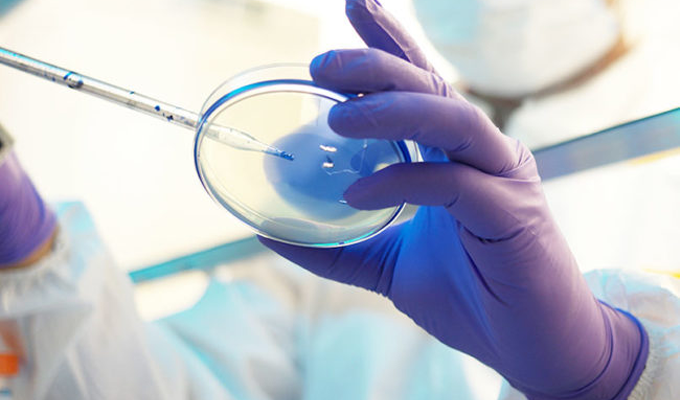
Interleukin-2 - Aldesleukin Injection
What is this medication?
ALDESLEUKIN (al des LOO kin) treats kidney cancer and skin cancer. It works by helping your immune system slow or stop the spread of cancer cells.
This medicine may be used for other purposes; ask your health care provider or pharmacist if you have questions.
COMMON BRAND NAME(S): Proleukin
What should I tell my care team before I take this medication?
They need to know if you have any of these conditions:
- Autoimmune conditions, such as Crohn disease, ulcerative colitis, lupus
- Having or recent CT, MRI, or X-ray
- Heart disease
- Heart failure
- Immune system problems
- Infection
- Kidney disease
- Liver disease
- Lung disease
- Nervous system conditions, such as dementia, Guillain-Barre syndrome, loss of balance, myasthenia gravis, seizures, trouble speaking
- Organ transplant
- An unusual or allergic reaction to aldesleukin, other medications, foods, dyes, or preservatives
- Pregnant or trying to get pregnant
- Breastfeeding
How should I use this medication?
This medication is infused into a vein. It is given by your care team in a hospital or clinic setting.
Talk to your care team about the use of this medication in children. Special care may be needed.
Overdosage: If you think you have taken too much of this medicine contact a poison control center or emergency room at once.
NOTE: This medicine is only for you. Do not share this medicine with others.
What if I miss a dose?
Keep appointments for follow-up doses. It is important not to miss your dose. Call your care team if you are unable to keep an appointment.
What may interact with this medication?
- Aspirin and aspirin-like medications
- Certain contrast agents used before CT, MRI, or X-ray scans
- Certain medications for infection, such as acyclovir, adefovir, amphotericin B, bacitracin, cidofovir, foscarnet, ganciclovir, gentamicin, pentamidine, vancomycin
- Cisplatin
- Cyclosporine
- Diuretics
- Medications for blood pressure
- NSAIDs, medications for pain and inflammation, such as ibuprofen or naproxen
- Pamidronate
- Steroid medications, such as prednisone or cortisone
- Zoledronic acid
This medication may affect how other medications work. Talk with your care team about all of the medications you take. They may suggest changes to your treatment plan to lower the risk of side effects and to make sure your medications work as intended.
This list may not describe all possible interactions. Give your health care provider a list of all the medicines, herbs, non-prescription drugs, or dietary supplements you use. Also tell them if you smoke, drink alcohol, or use illegal drugs. Some items may interact with your medicine.
What should I watch for while using this medication?
Visit your care team for regular checks on your progress. Report any side effects. Continue your course of treatment even though you have side effects unless your care team tells you to stop.
You may need blood work done while you are taking this medication.
Serious side effects may occur during the infusion of this medication. To reduce the risk, your care team may give you medications to take before the infusion. Follow the directions from your care team.
If you are going to need a CT, MRI, or X-ray, tell your care team that you have received this medication. To make parts of the body easier to view during your scan, your care team may need to give you a contrast agent. Contrast agents that contain iodine may cause serious adverse reactions in people who have received this medication. This can occur during and for several months after your last dose.
This medication may increase your risk of getting an infection. Call your care team for advice if you get a fever, chills, sore throat, or other symptoms of a cold or flu. Do not treat yourself. Try to avoid being around people who are sick.
Avoid taking medications that contain aspirin, acetaminophen, ibuprofen, naproxen, or ketoprofen unless instructed by your care team. These medications may hide a fever.
Talk to your care team if you may be pregnant. Serious birth defects can occur if you take this medication during pregnancy. You will need a negative pregnancy test before starting this medication. Contraception is recommended while taking this medication. Your care team can help you find the option that works for you.
Do not breastfeed while taking this medication.
What side effects may I notice from receiving this medication?
Side effects that you should report to your care team as soon as possible:
- Allergic reactions or angioedema—skin rash, itching or hives, swelling of the face, eyes, lips, tongue, arms, or legs, trouble swallowing or breathing
- Capillary leak syndrome—stomach or muscle pain, unusual weakness or fatigue, feeling faint or lightheaded, decrease in the amount of urine, swelling of the ankles, hands, or feet, trouble breathing
- Falling asleep during daily activities
- Heart rhythm changes—fast or irregular heartbeat, dizziness, feeling faint or lightheaded, chest pain, trouble breathing
- Infection—fever, chills, cough, sore throat, wounds that don't heal, pain or trouble when passing urine, general feeling of discomfort or being unwell
- Infusion reactions—chest pain, shortness of breath or trouble breathing, feeling faint or lightheaded
- Kidney injury—decrease in the amount of urine, swelling of the ankles, hands, or feet
- Liver injury—right upper belly pain, loss of appetite, nausea, light-colored stool, dark yellow or brown urine, yellowing skin or eyes, unusual weakness or fatigue
- Low blood pressure—dizziness, feeling faint or lightheaded, blurry vision
- Mood and behavior changes - anxiety, nervousness, irritability and restlessness, confusion, hallucinations, feeling distrust or suspicion of others
- Pain, tingling, or numbness in the hands or feet, muscle weakness, change in vision, confusion or trouble speaking, loss of balance or coordination, trouble walking, seizures
- Redness, blistering, peeling, or loosening of the skin, including inside the mouth
- Severe or prolonged diarrhea
- Unusual weakness or fatigue
Side effects that usually do not require medical attention (report these to your care team if they continue or are bothersome):
- Nausea
- Pain, redness, or swelling with sores inside the mouth or throat
- Skin rash
- Swelling of the ankles, hands, or feet
- Vomiting
This list may not describe all possible side effects. Call your doctor for medical advice about side effects. You may report side effects to FDA at 1-800-FDA-1088.
Where should I keep my medication?
This medication is given in a hospital or clinic. It will not be stored at home.
NOTE: This sheet is a summary. It may not cover all possible information. If you have questions about this medicine, talk to your doctor, pharmacist, or health care provider.
Additional Information From Chemocare.com About Interleukin-2
Self-Care Tips:
- For flu-like symptoms, keep warm with blankets and drink plenty of liquids. There are medications that can help reduce the discomfort caused by chills.
- Drink at least two to three quarts of fluid every 24 hours, unless you are instructed otherwise.
- To help treat/prevent mouth sores, use a soft toothbrush, and rinse three times a day with 1/2 - 1 teaspoon of baking soda or salt mixed with 8 ounces of water.
- Patients receiving injections under the skin may develop pain and hard bumps at the injection sites. These reactions are normal. Pain will go away within minutes, although the bumps may remain for a few months after therapy. Changing the sites of the injections, and using warm or cold compresses are helpful.
- To reduce nausea, take anti-nausea medications as prescribed by your doctor, and eat small, frequent meals.
- Avoid sun exposure. Wear SPF 15 (or higher) sunblock and protective clothing.
- In general, drinking alcoholic beverages should be minimized or avoided. You should discuss this with your doctor.
- Wash your hands often.
- You may be at risk of infection so try to avoid crowds or people with colds, and report fever or any other signs of infection immediately to your healthcare provider.
- Maintain good nutrition.
- If you experience symptoms or side effects, be sure to discuss them with your health care team. They can prescribe medications and/or offer other suggestions that are effective in managing such problems.
When to contact your doctor or health care provider:
Contact your health care provider immediately, day or night, if you should experience any of the following symptoms:
- Wheezing or difficulty breathing
- Dizziness (especially when changing position), sudden swelling or rapid weight gain, little or no urine output (for 8-12 hours), shortness of breath, difficulty breathing, irregular heartbeats or chest pain.
The following symptoms require medical attention, but are not an emergency. Contact your health care provider within 24 hours of noticing any of the following:
- Anxiety, changes in thinking or mood, confusion, difficulty concentrating or trouble sleeping.
- Diarrhea (more than 4 to 6 episodes in a 24-hour period).
- Nausea that interferes with eating and is not relieved by medications prescribed by your doctor.
- Vomiting (more than 4 to 5 episodes within a 24-hour period).
- Sustained fever (fever lasting/occurring beyond the expected timeframe for dose and schedule).
- Unusual bleeding or bruising.
- Black or tarry stools, or blood in your stools or urine.
- Extreme fatigue (unable to perform self-care activities).
In addition, call your health care provider if any side effects become continuous, serious or your condition worsens.

